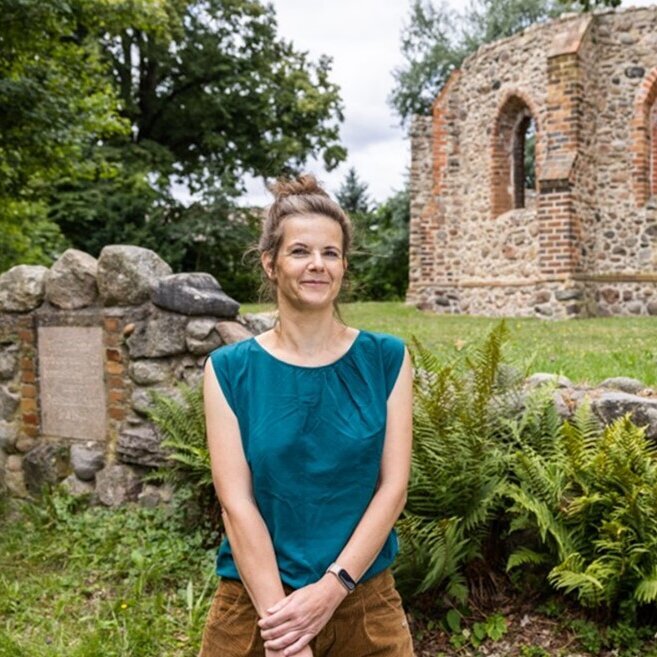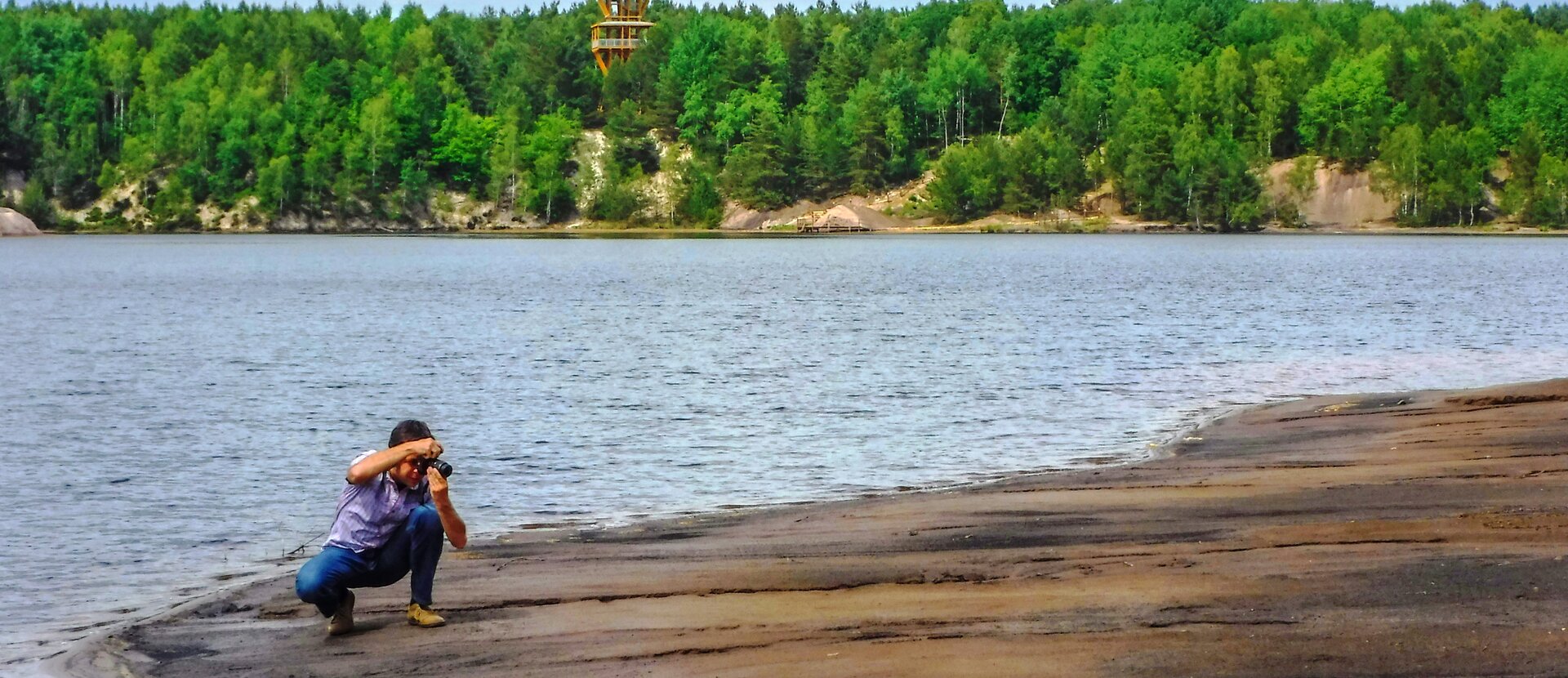
The beauty of Lusatia lies not only above but also below ground - this becomes clear when you talk to Nancy Sauer. In any case, what happens underground has an influence on the appearance and shape above ground. The geologist is the director of the UNESCO Global Geopark Muskauer Faltenbogen/Łuk Mużakowa. "This morainic landscape of the Muskau Arch, created by the Ice Age, shaped by man over the centuries and shaped by mining, still fascinates me anew," says the geologist. "Around 400 brightly colored lakes, shining bright blue or turquoise like little gems in the landscape, were created when people left nature to its own devices after exploiting the open-cast mining holes." But Nancy Sauer wouldn't have become a geologist if she didn't always look a little deeper and so she describes a particular fascination of one of her favorite places, the picturesque Berg church ruins, which would probably remain hidden to lay eyes: "The church was built from boulders - from erratic blocks that were moved here from the north by huge glaciers during the Ice Age and so, for me as a geologist, the church ruins read like a picture book of the geological history of Scandinavia." She can tell exactly which stone in the church comes from Sweden, which from Denmark or from the bottom of the Baltic Sea.
Lusatia, with its eventful history, is like a wanderer between worlds for Nancy Sauer. At times it belonged to Bohemia, at times to Prussia, at times to Silesia, at times to Austria and today Lusatia is coming to the end of its life as a mining region and has to turn to something new. "It electrifies me. This change that we are in the middle of. For me, Lusatia is like a huge laboratory for the future, a testing ground for what the future could look like - and not just here!" It's good that people live in Lusatia - and are moving here - who see the opportunity that lies in change and are seizing it .
Nancy Sauer has two tips for new visitors to Lusatia: "You absolutely have to visit the Fürst-Pückler Park World Heritage Site in Bad Muskau! The landscape is beautiful, but the best time to visit is early in the morning, when the fog is still hanging over the fields and the atmosphere is unique. And of course, you should also take time to visit the Upper Lusatian Heath and Pond Landscape Biosphere Reserve - you'll find this tranquillity and vastness there that is incredibly grounding."
Interview with Nancy Sauer
What is the great heritage of Lusatia for you?
At first glance, it is probably the lignite. But at second, much more important glance, it is the diversity resulting from constant change, which is often very contradictory. Landscapes have been reshaped by human hands. Sometimes artistically, as in Muskauer Park, sometimes exploitatively, as in the Faltenbogen. The land sometimes belonged to Bohemia, sometimes to Prussia, sometimes to Silesia, sometimes to Austria. And today, Lusatia is coming to the end of its life as a mining region and has to turn to something new. The legacy of constant change is what defines Lusatia for me.





